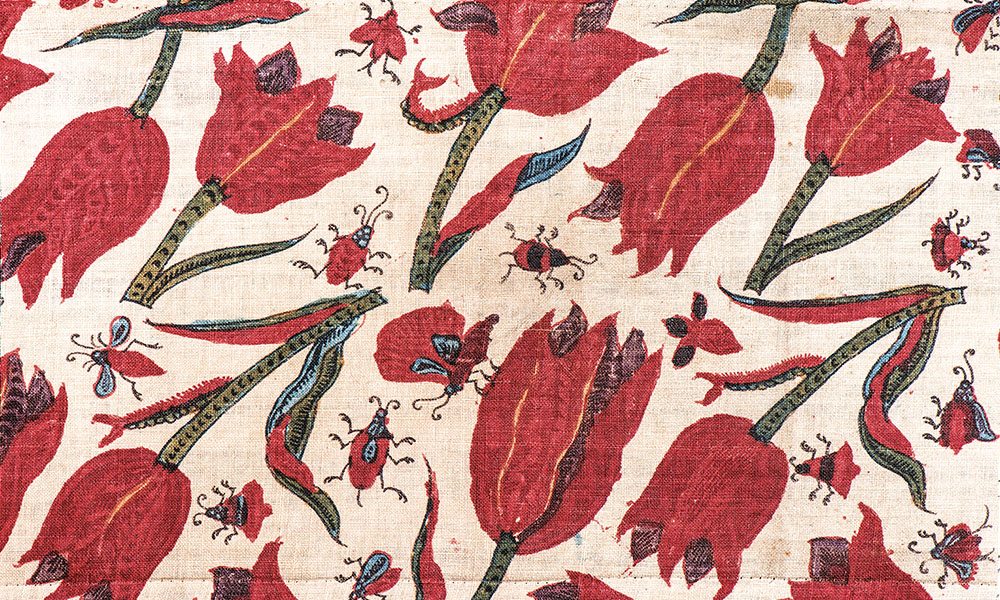HALI: The India Edition

Chintz fragment with tulips and insects (reportedly found in Japan), Coromandel Coast, India, ca.1700-30. 0.13 x 0.20 m (5″ x 8″). Hand-drawn on cotton cloth using dyes, mordants and resists. Karun Thakar Collection
More than ever are we reminded of the interconnected nature of our world. In his editorial for HALI: The India Edition, Ben Evans muses on how this fact and its historical significance can be understood through the lens of Indian textiles.
For me, this chintz fragment has always loomed larger than its diminutive size since it unites a number of strands of interest in one object. It is a small piece of seemingly unimportant cloth in which, by looking a little deeper, one can see that the lively drawing of tulips and insects is sketched in a manner reminiscent of botanical drawings of the 17th century, when European artists were recording the natural world. These have been copied by Indian artists with a vibrancy that, according to one expert, reflects the tulips seen on VOC export porcelain from the mid-17th century.
That in itself is a remarkable instance of trade and design transfer, but the fact that this fragment was found in Japan adds another layer to its story. The HALI Tour to Japan in 2019 revealed the extraordinary reverence paid there to Indian cotton, a fabric that in Britain, and perhaps elsewhere in the West, had lost its lustre and appeal through its ubiquity—indeed the adjective ‘chintzy’ even became a pejorative term. The care taken to preserve the textile and the value attached to its function instils this humble scrap of cloth with new meaning for me and can serve as a metaphor for the appreciation of Indian textiles exported for generations across the world.
While there are a number of contributions in this edition concerned with exhibitions and upcoming HPL publications about Indian textiles, it is important to highlight the role played in India by private and public collectors, institutions and researchers concerned with the country’s textile heritage.
The number of treasures that are still housed in Indian museums is remarkable, something that two HALI Tours have celebrated. The preparation of this special edition has shown that there is much more new material than could possibly fit into the pages of one magazine, and we will be revisiting this subject again, when we trust that there will be insights into more Indian museum collections, and further reporting on the burgeoning interest in antique textile collecting in India.




























Comments [0] Sign in to comment